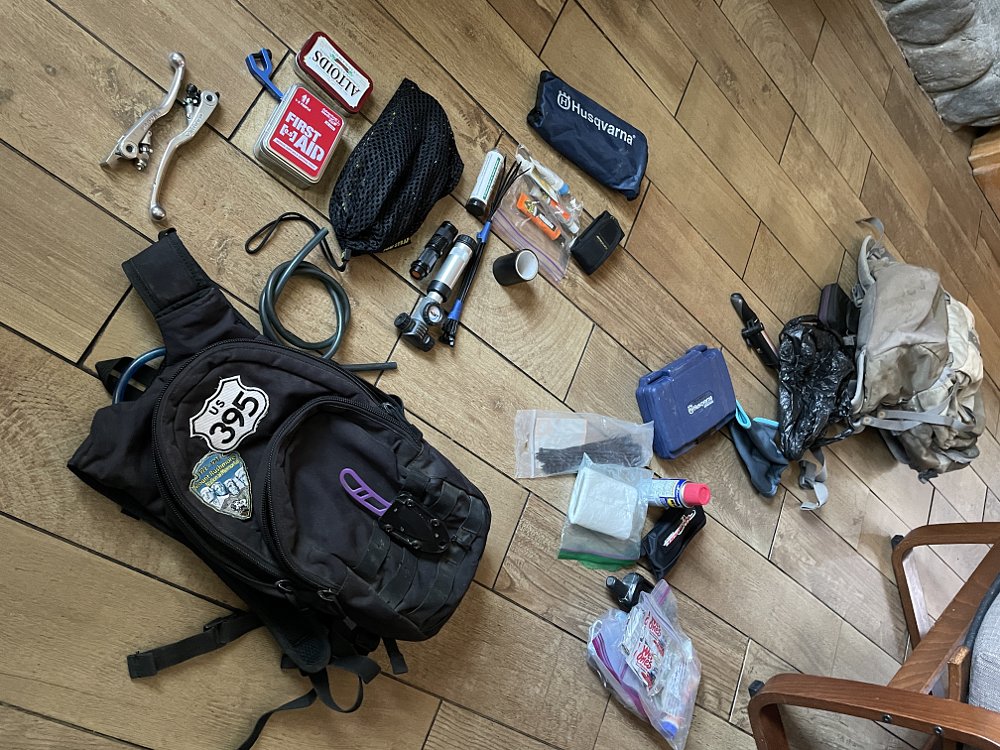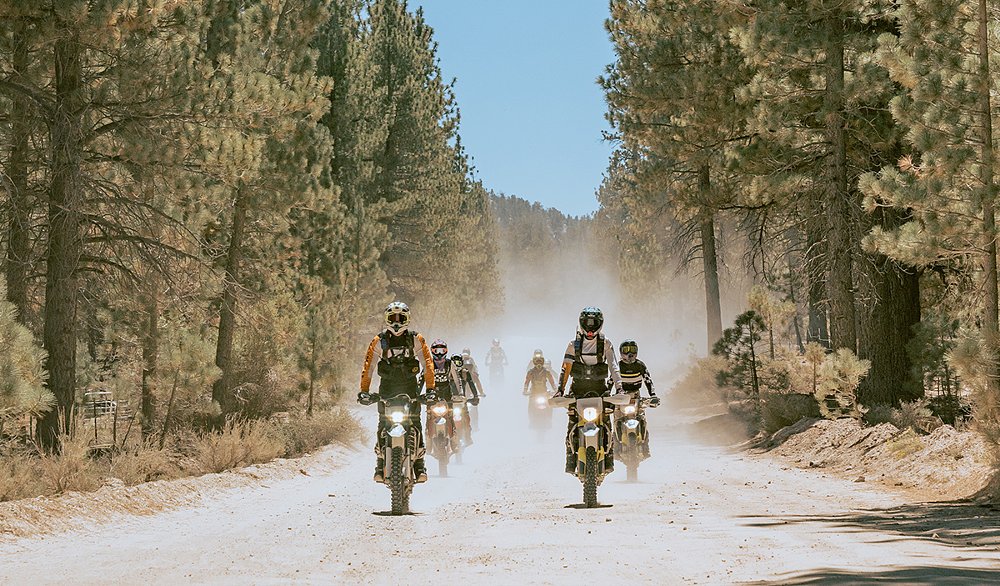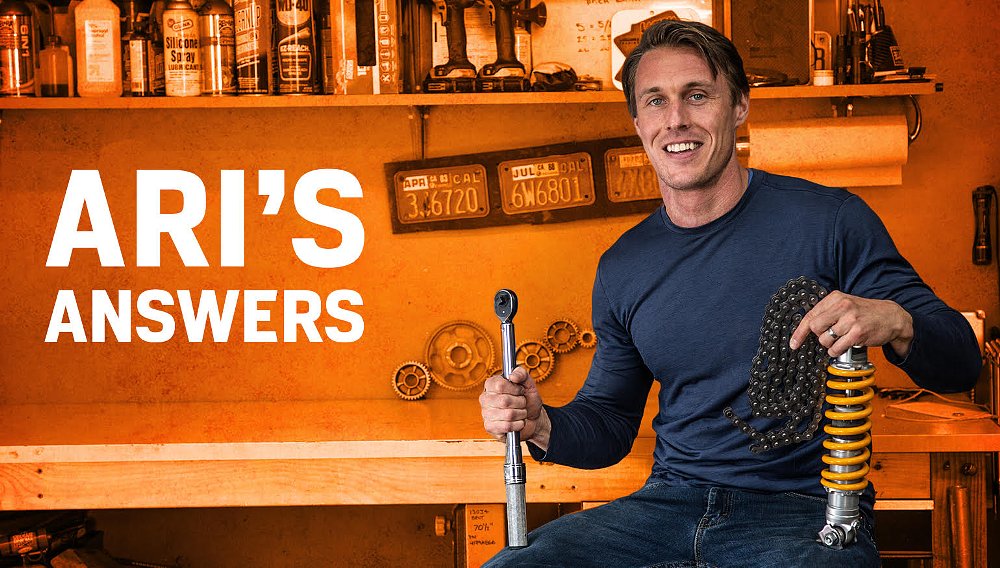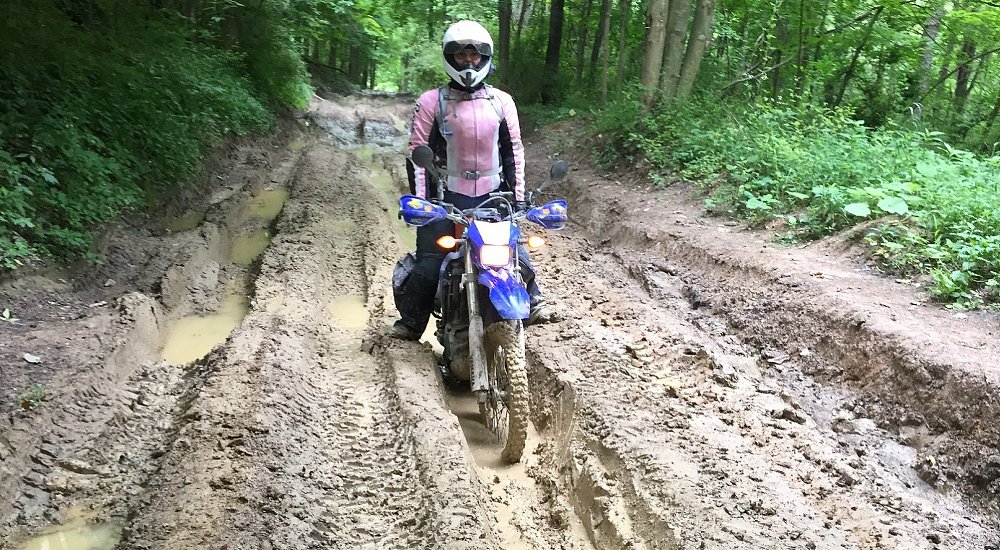Whether you are heading out on your first dual-sport trip, or finally had that come-to-Jesus repair on the trailside that scared you straight, building out a pack kit for your off-road adventures can be an ever-evolving process.
Each bike, rider, and route will have its own unique variables that can inform what is necessary to carry in your pack. This guide aims to help craft a strategy and a basic list to build a foundation for your trail pack for dual-sport day trips.
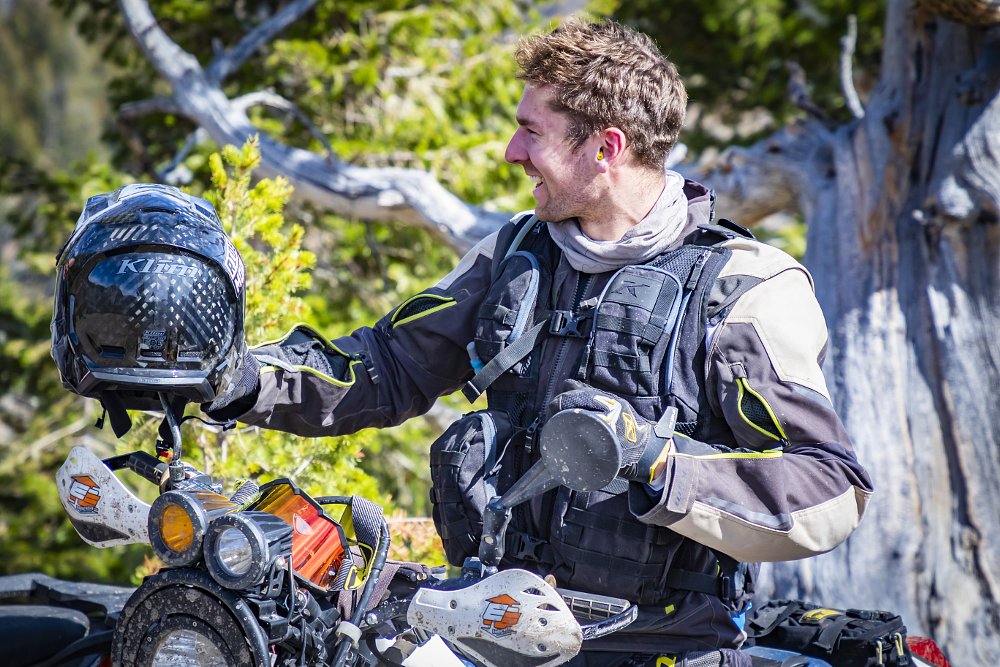
Pack-building strategy
Where to start? Plenty of riders skip the strategy part and just start throwing items into their pack, only to find they have packed all the wrong things and are missing some true essentials. Slow down and consider the following as you start building your pack:
- What type of bike are you riding? What specific tools does it require? Do a practice run in the comfort of your own garage of the most common trailside repairs you anticipate you will encounter and take note of the most commonly used tools.
- What kind of riding are you doing? Long-distance or short? What will the terrain be like? I always ask myself: Can I limp a flat tire back to basecamp, or if not, can I get a truck out onto the trail for a pick up? This will help inform the extent of repair kits, tools, and spares I will pack.
- What is your luggage situation? Some riders prefer to carry the weight on their body with the Klim Arsenal Vest or a hydration backpack while others prefer to strap the poundage on their motorcycle with packs such as the Kriega Overlander-S OS-Base, paired with one of their OS-Bags (6, 12, and 18).
- Where and when are you riding? Will it be sweltering hot or freezing cold? Be prepared for the elements.
- Have a plan! Are you riding with a group where you can have some buddies for help and to share the load? If you are solo, how will you be able to call in some help? Research some basic best practices for first aid and trailside repairs. Carrying the tools is great and all, but if you don’t know how to use them when needed, what is the point?
Pack-building 101
Alright, now that you have done some serious thinking about the demands of your bike and your ride, it’s time to start building your pack. Below are just some of the basics that I like to keep in my day-trip dual-sport pack. I've divided them into three categories.
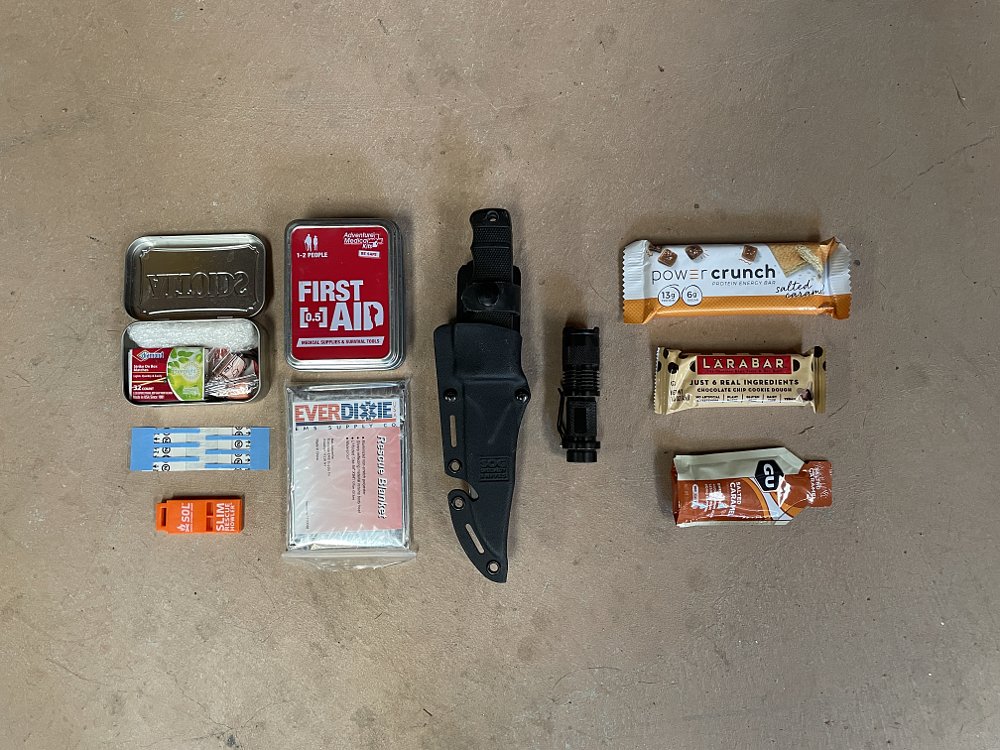
Health and medical:
- First aid kit: The market is saturated with kits of all sizes and materials. Try to stick to a kit that has the essentials and is small enough to work in your pack. A personal preference of mine, I always like to add a Zip-stitch to my med pack in case of any deep lacerations. It’s just a step above what is normally in a first aid kit and gives me peace of mind.
- GPS locator beacon: If you can afford it, a GPS locator beacon can be a literal life saver.
- Surviving the elements: Be prepared for a worst case scenario and ask yourself: What would I need to survive the elements? I like to include a foil heat blanket, matches, a flashlight, a fixed blade, biodegradable wipes and hand warmers in my pack.
- Nutrition: Off-road riding takes quite a bit of energy and so I like to pack snacks for two riders, in case my friend forgot theirs or in case my trip goes longer than anticipated. Bring high-calorie bars, electrolytes, and of course water.
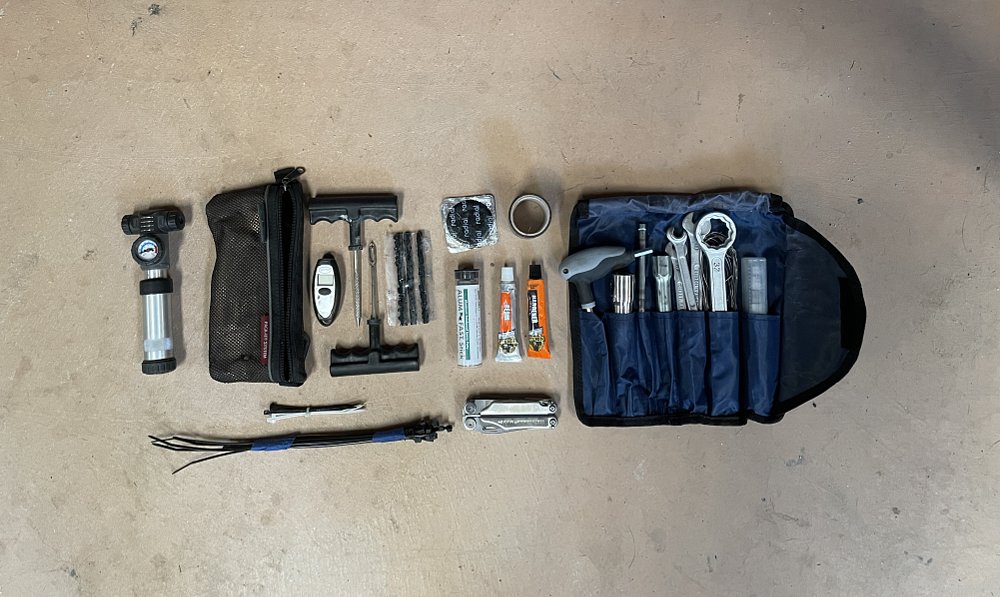
Repairs and tools:
- Multi-tool: The reason I list this first is because the right multi-tool can help remove a lot of extraneous tools and weight from your pack. Pliers, channel lock, flat head screwdriver, philips screwdriver, awl, knife, wire cutters, and more can be handled by a multi-tool. Again, the market is saturated with all sizes and brands of multi-tools so research which one is right for you and your pack.
- OEM tool kit: Now, hear me out on this. I know this kit is heavy and the tools are often cheaply made, but you can trust that the OEM has only put what is absolutely needed in here. I will often start with this kit and swap out tools to lighter or better quality equipment wherever possible. If I have a tail bag, I will often leave the OEM kit as is, but if I am stuck carrying it on my back I like to lighten the load as much as possible.
- Open-end wrenches, Allen wrenches, quarter-inch ratchet and sockets: Remember those practice runs you did doing mock repairs on your bike in the garage? Only include the size wrenches you needed to conduct those repairs. If you want to get fancy, find those wrenches in weight-saving titanium to keep your pack weight down. If they are already accounted for in the OEM tool kit then disregard.
- Duct tape, electrical tape, safety wire and zip ties: All essential items to cobble back together broken plastics, pedals, levers, etc. Create small “bite-size bundles” from the store-bought rolls or packages so you are not carrying more material and weight than necessary.
- Five-minute epoxy, JB Weld, and metal putty: For those jobs that need more than zip ties, these tough chemicals can really save the day on the trail. Again, try to buy the smallest available tubes to save weight in your pack.
- Flat tire repair kit: You hope you will never need it, but it is always best to carry it. Take into account if your motorcycle has tubeless or tubed tires. Plugging a tubeless tire is a much easier prospect than having to patch or replace an innertube. A lot of riders make the switch to a Tubliss system or Nitro Mousse system specifically to avoid ever having to deal with a punctured innertube on the trail. If you have the know-how, packing an extra inner tube and tire irons along with the repair kit means you can theoretically fix an innertube flat on the trail. If you don’t have the know-how, make sure you have contingency plans for dealing with a flat you might not be able to fix trail-side.
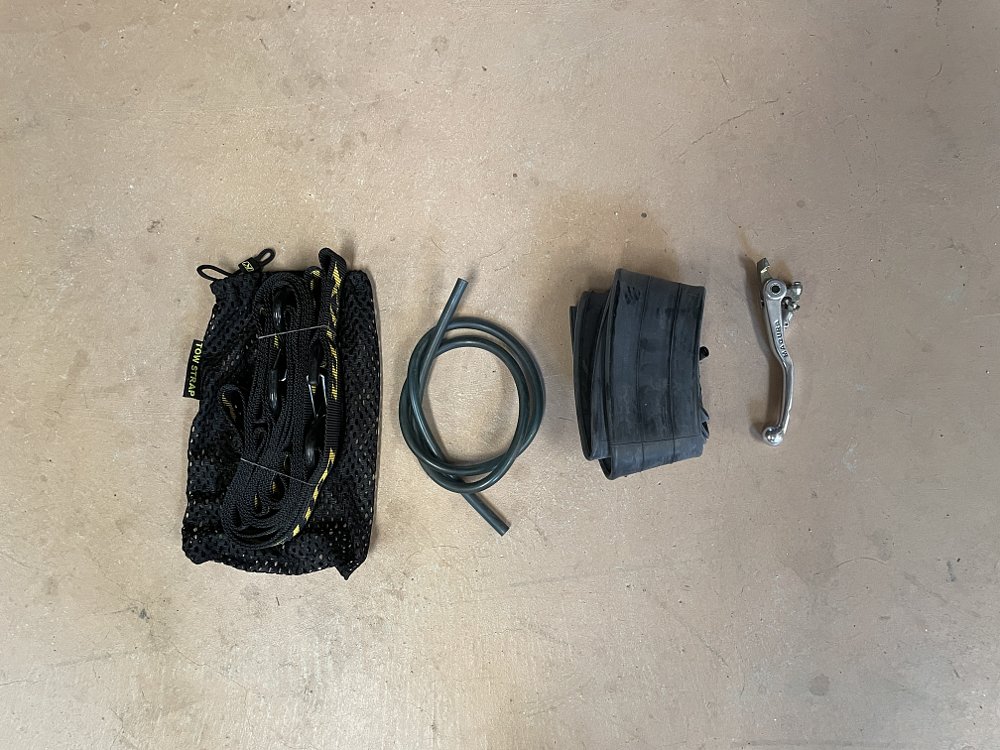
Spares:
- Clutch lever and front brake lever: probably the most commonly broken items on the trail. Sometimes it may snap off and still be usable, but if it becomes unusable it can leave you stranded. If your bike has robust hand guards, broken levers are far less likely. Personally, my decision to carry spares depends on the difficulty and remoteness of the journey.
- Fuel hose: Carrying a length of fuel hose can be helpful in two ways. One, in case your current fuel line gets compromised in a crash and needs replacing. Or two, if you run out of fuel and might need to siphon some off from a buddy's bike.
- Tow strap and cash: Sometimes you are just out of luck and can’t repair a breakdown. A tow strap can at least help get you off the trail and to a site you can load up and get to a service station. Some cold hard cash can also go a long way in bartering for help, spare parts or a tow.
Make it your own
So there you have it, a basic foundation to build your day-trip dual-sport pack. Like I mentioned in the intro, every bike and every route will have different demands. Be prepared to modify and curate your pack per ride by keeping the basic planning strategies in mind. It’s always fun to trade notes and see what my friends are packing, If you have a special twist on the list above share it in the comments.
The trail is waiting. Be prepared for what it has in store for you.

 Membership
Membership


